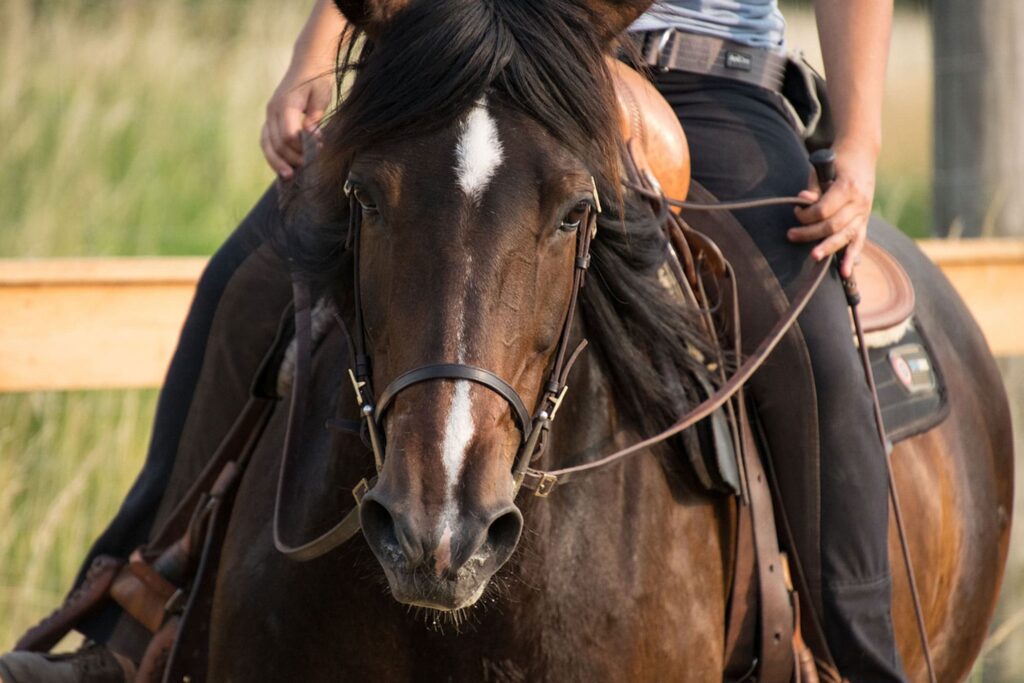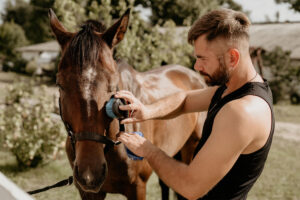
Ranch riding is a demanding equestrian discipline that requires riders to showcase the versatility and athleticism of their horses. One key gait to master in ranch riding is the extended trot, also known as the long trot. In this article, we will explore the techniques and tips to help you perfect the extended trot and excel in the ranch riding arena.
Understanding the Extended Trot: The extended trot is a powerful and ground-covering gait where the horse lengthens its stride while maintaining a balanced and rhythmic movement. It demonstrates the horse’s ability to maintain impulsion, elasticity, and engagement. The extended trot is often performed on straight lines, allowing the horse to showcase its athleticism and natural movement.
Developing Impulsion: Impulsion is the key to a successful extended trot. It refers to the horse’s forward energy and willingness to move freely. To develop impulsion, start by establishing a solid working trot and gradually ask your horse to extend its stride. Use your legs and seat to encourage your horse to move forward with energy. However, be sure to maintain a light contact on the reins to keep the horse balanced and responsive.
Maintaining Balance and Collection: While the extended trot requires more ground coverage, it is crucial to maintain balance and collection throughout the movement. As your horse extends its stride, focus on keeping its weight evenly distributed between the front and hind legs. Avoid letting the horse rush or lean on the forehand, as it can compromise its balance and overall performance. Regularly practice transitions between collected and extended trot to improve your horse’s adjustability and responsiveness.

Engaging the Hindquarters: A well-engaged hindquarters is essential for a powerful and expressive extended trot. To engage the hindquarters, ask your horse to step actively underneath its body by applying leg aids. The horse’s hind legs should reach forward and push off with strength, propelling the body forward. This engagement creates a spring-like movement and contributes to the horse’s overall impulsion and balance.
Perfecting Transitions: Smooth transitions are a fundamental component of the extended trot. Practice transitioning from the working trot to the extended trot and vice versa. Use your seat and leg aids to communicate your desired speed and length of stride. Aim for seamless transitions where your horse willingly extends and collects its stride without hesitation. Regularly incorporating transitions into your training sessions will improve your horse’s responsiveness and overall performance.
Developing Stamina and Endurance: The extended trot requires a considerable amount of stamina and endurance from both the horse and rider. Gradually increase the duration and intensity of extended trot exercises to develop your horse’s fitness level. Regular conditioning work, such as hill work and interval training, can enhance your horse’s strength and stamina, allowing for sustained and energetic extended trots.
Conclusion: Mastering the extended trot is crucial for success in ranch riding. Focus on developing impulsion, maintaining balance and collection, engaging the hindquarters, perfecting transitions, and building stamina. Remember to always prioritize your horse’s well-being and training gradually to avoid physical strain or mental fatigue. With practice, patience, and proper technique, you and your horse can confidently showcase an exceptional extended trot in the ranch riding arena.






